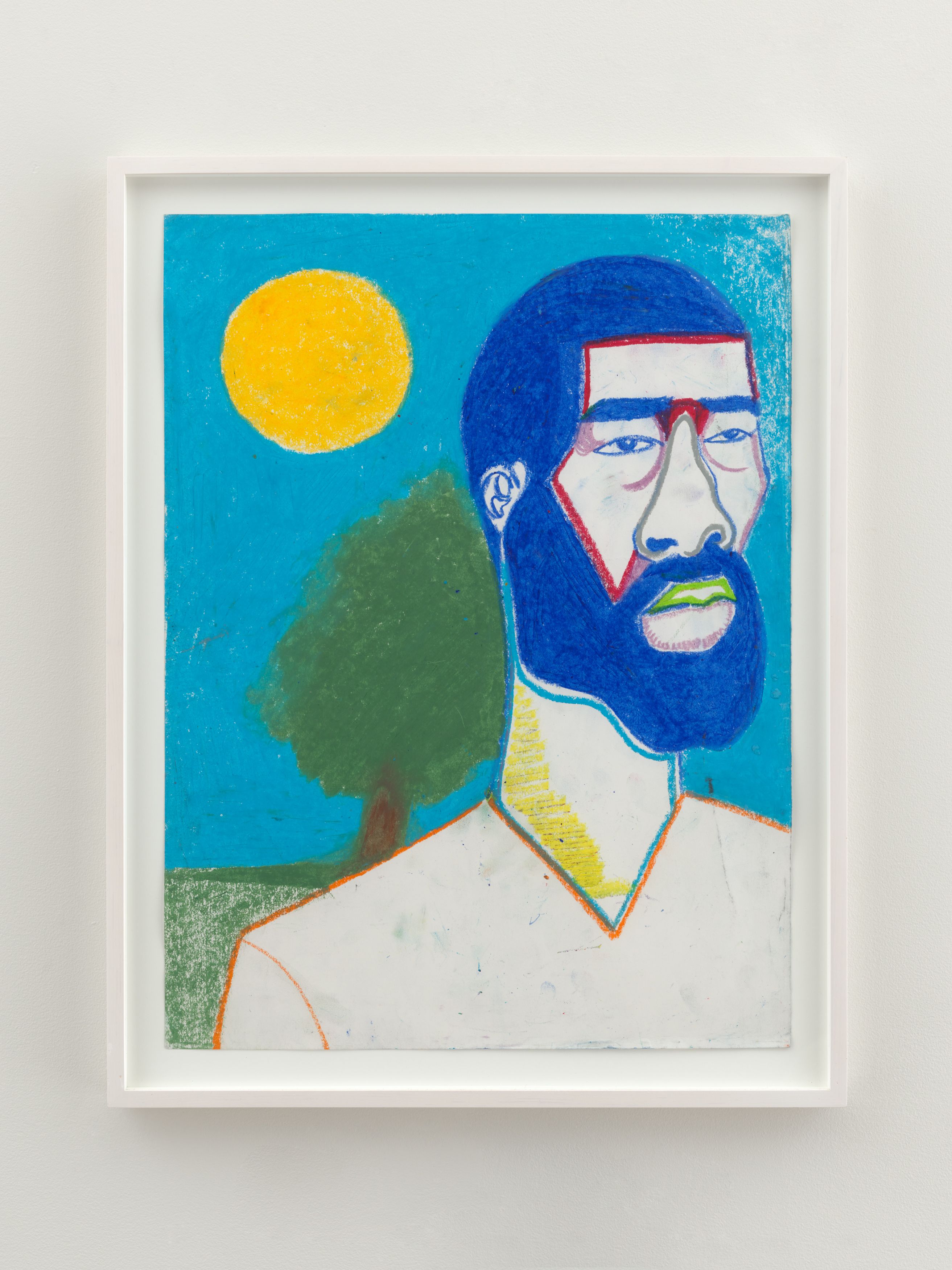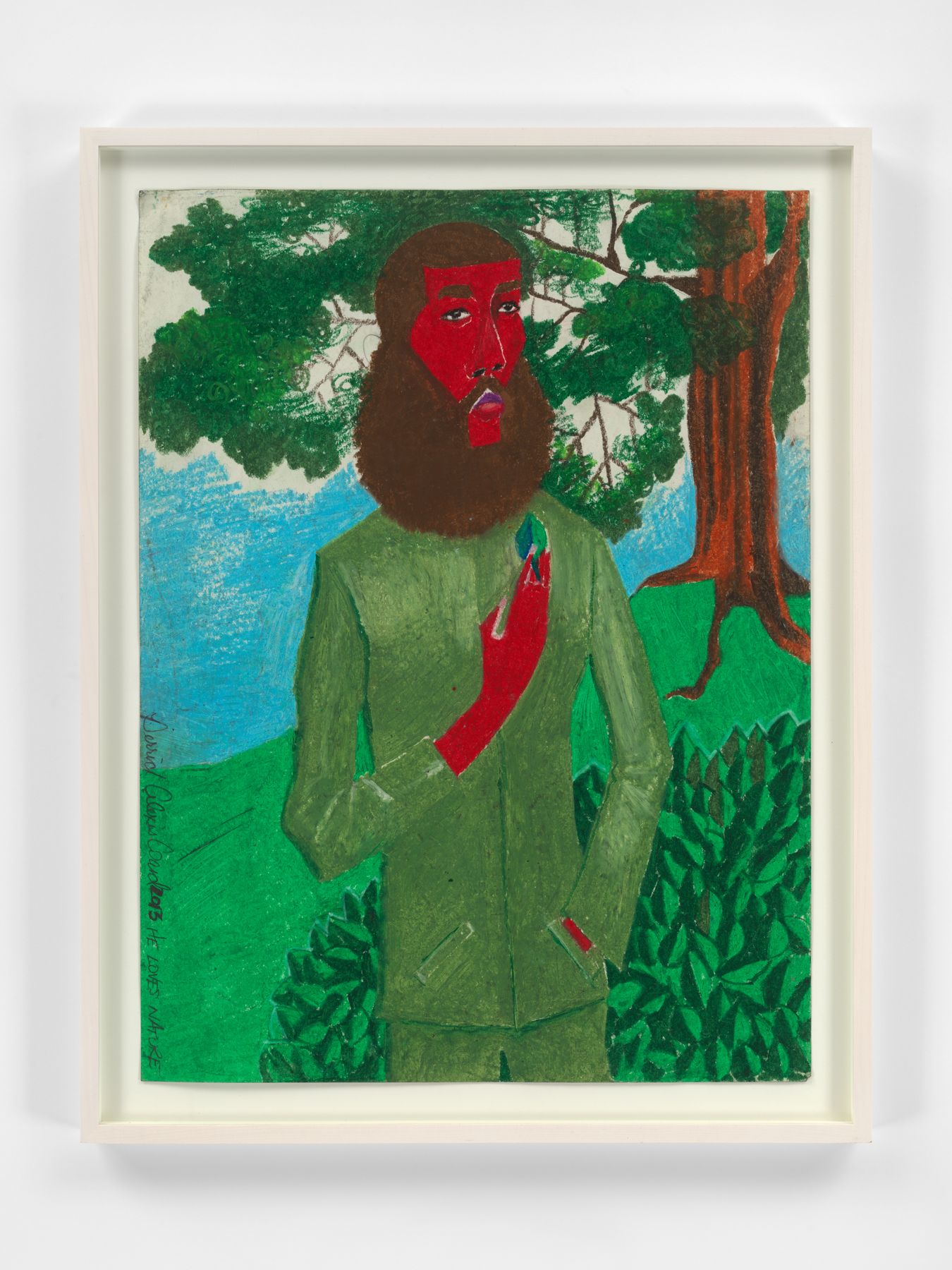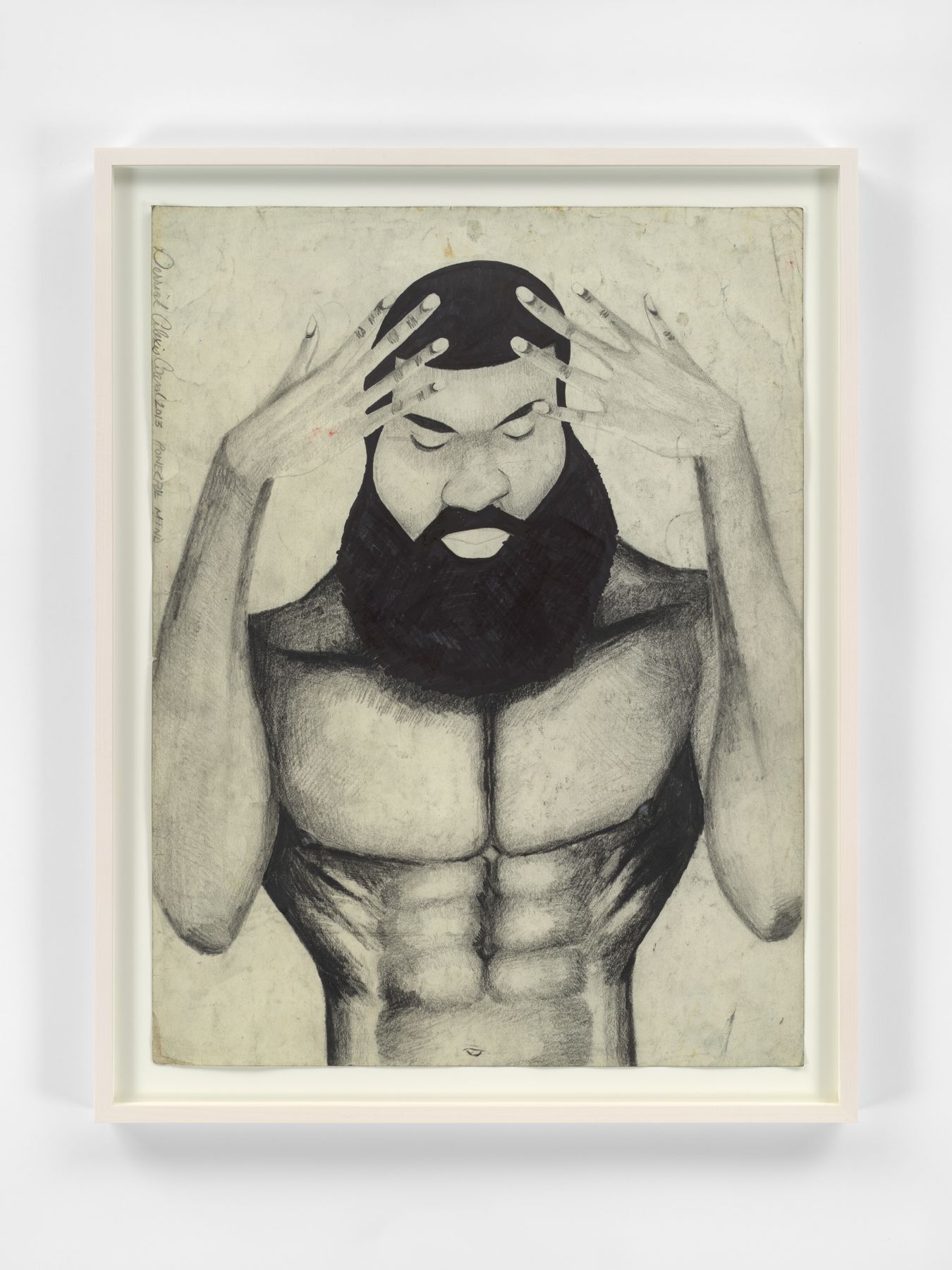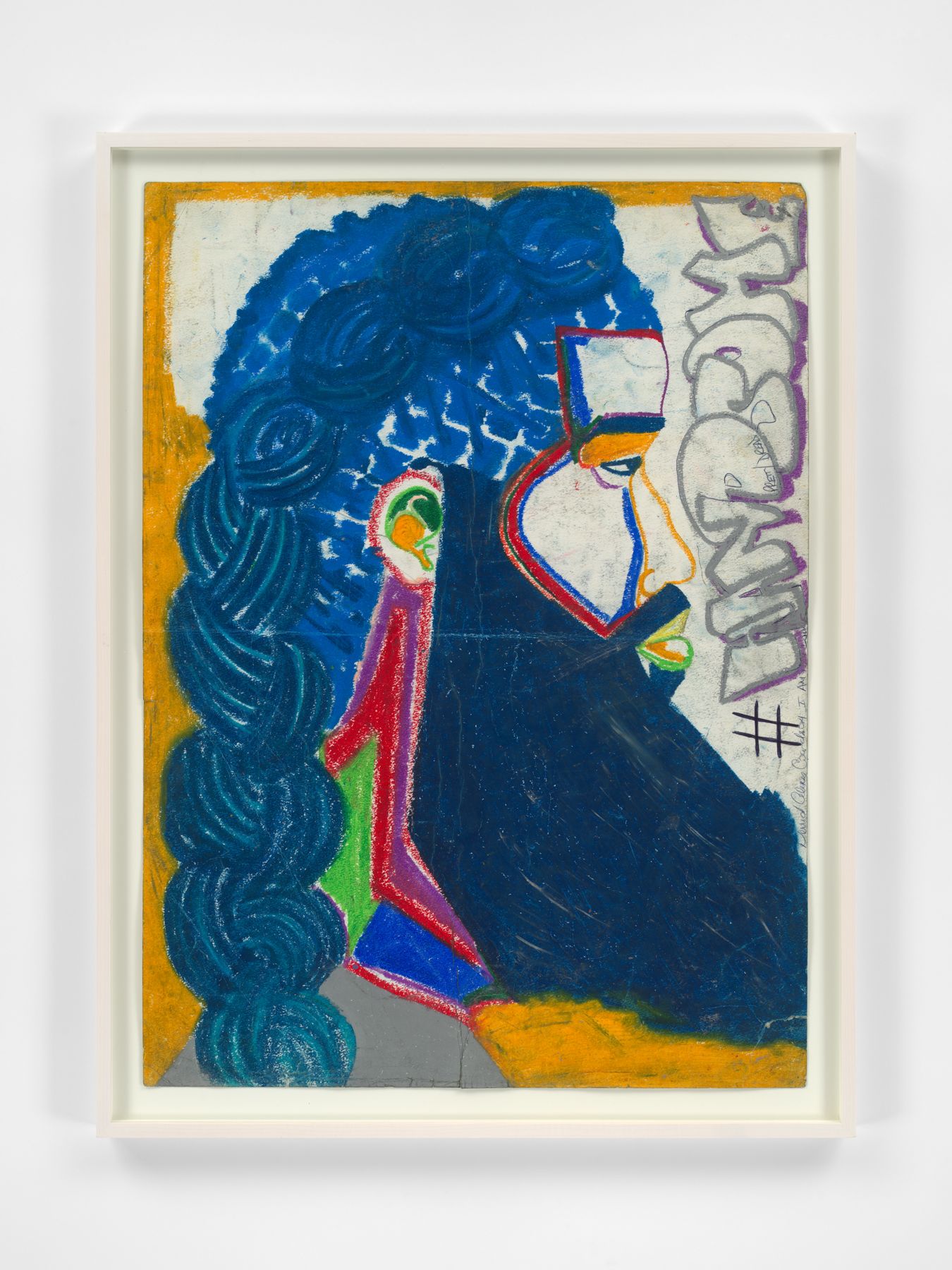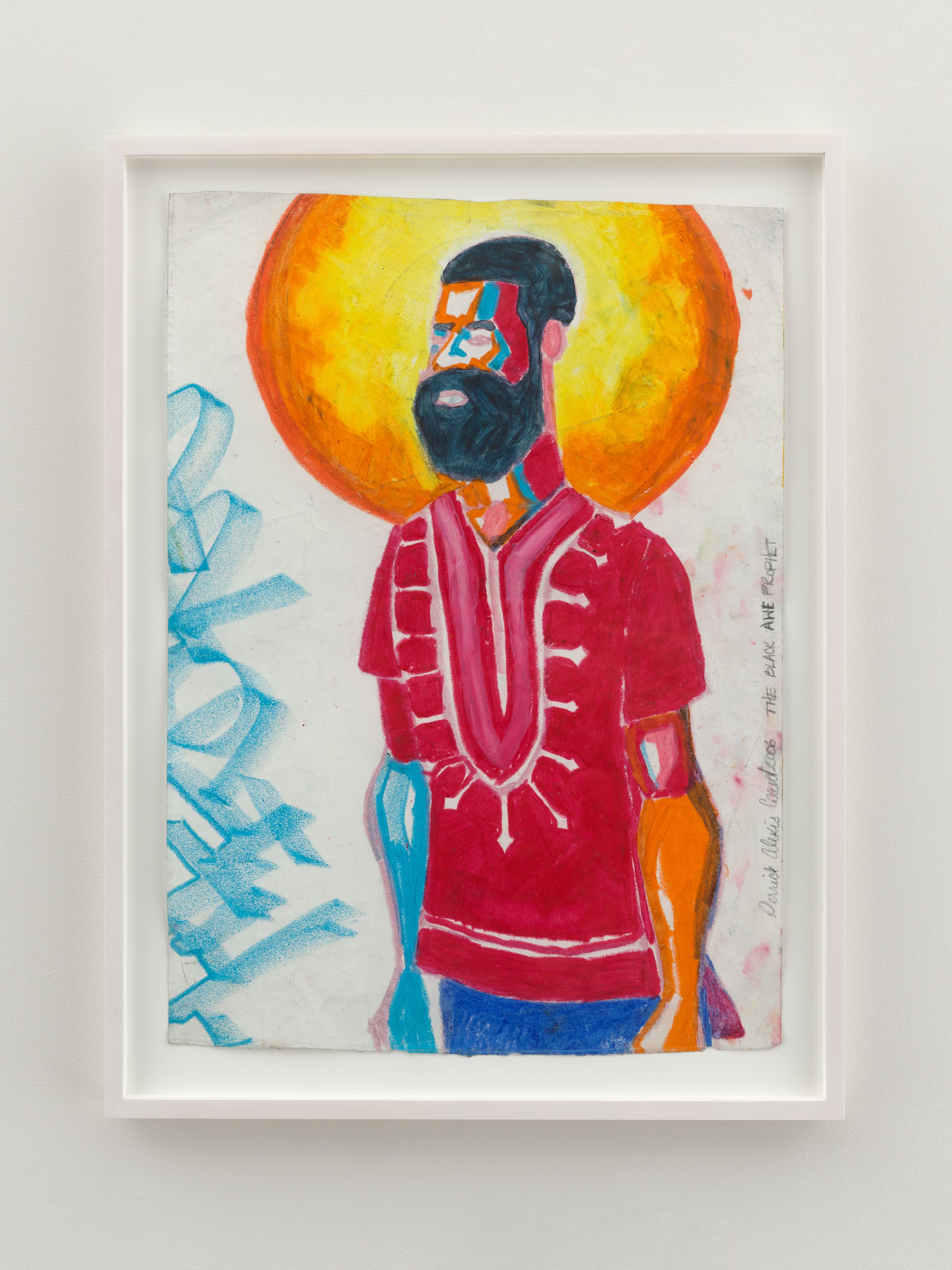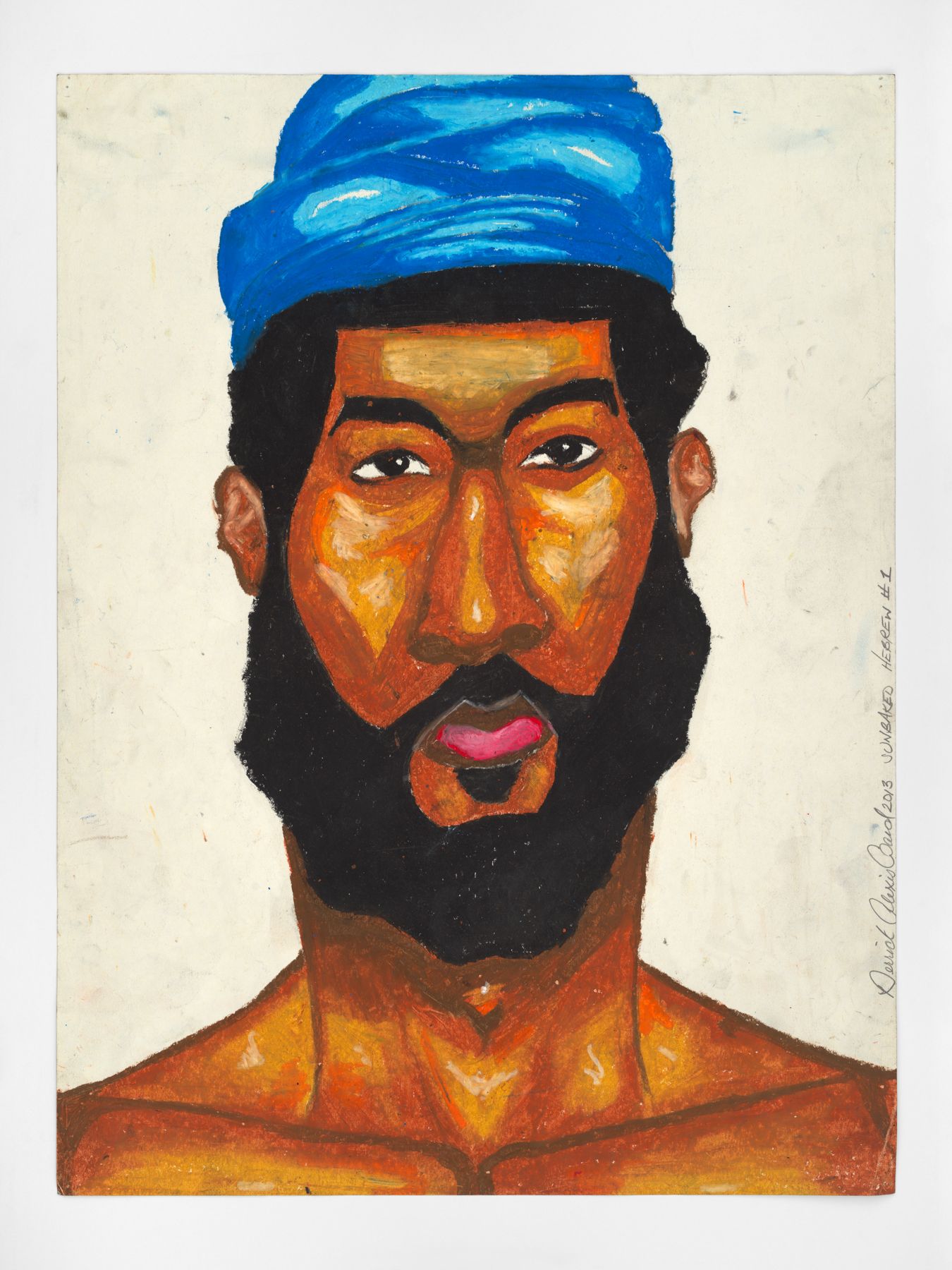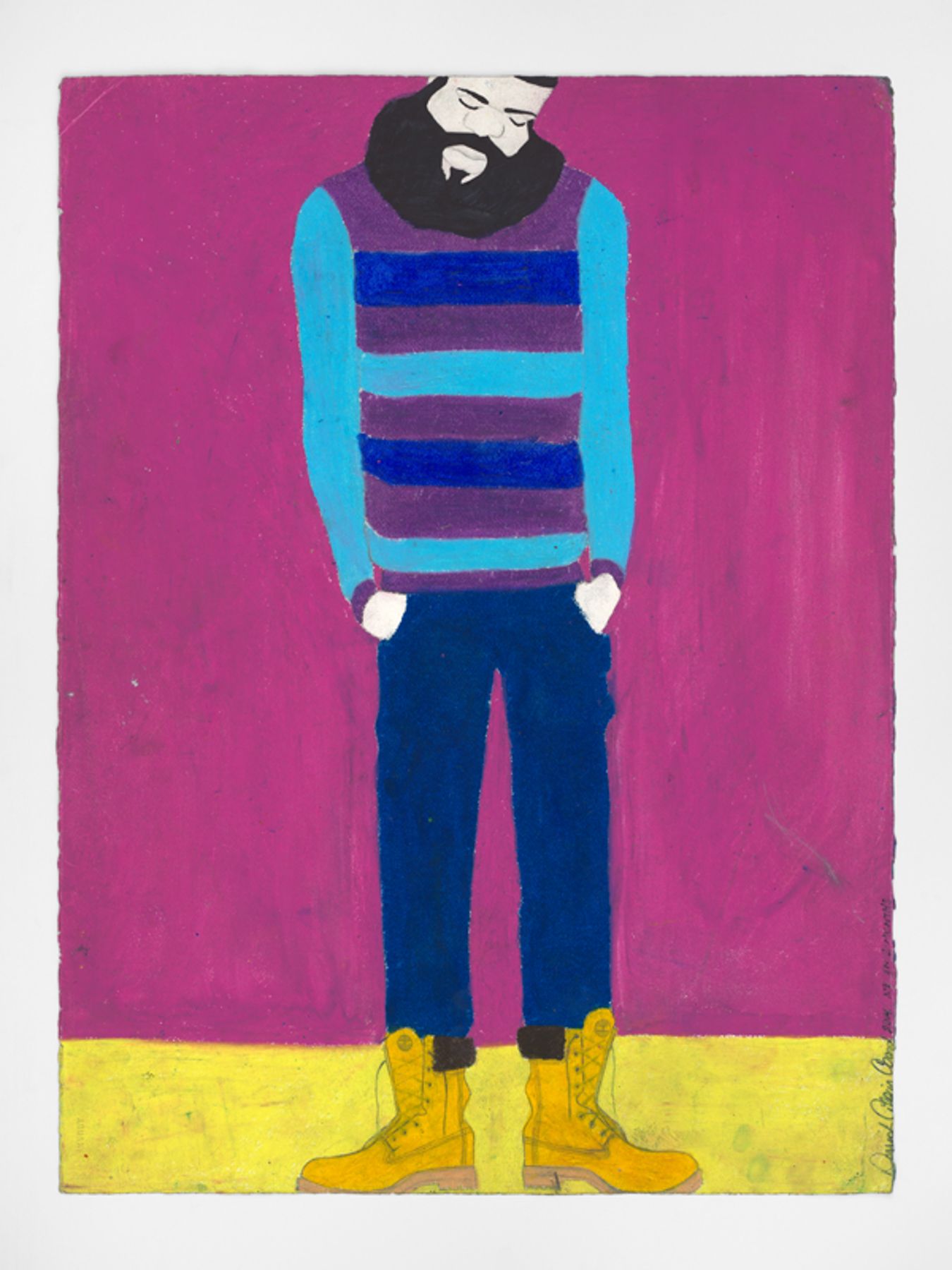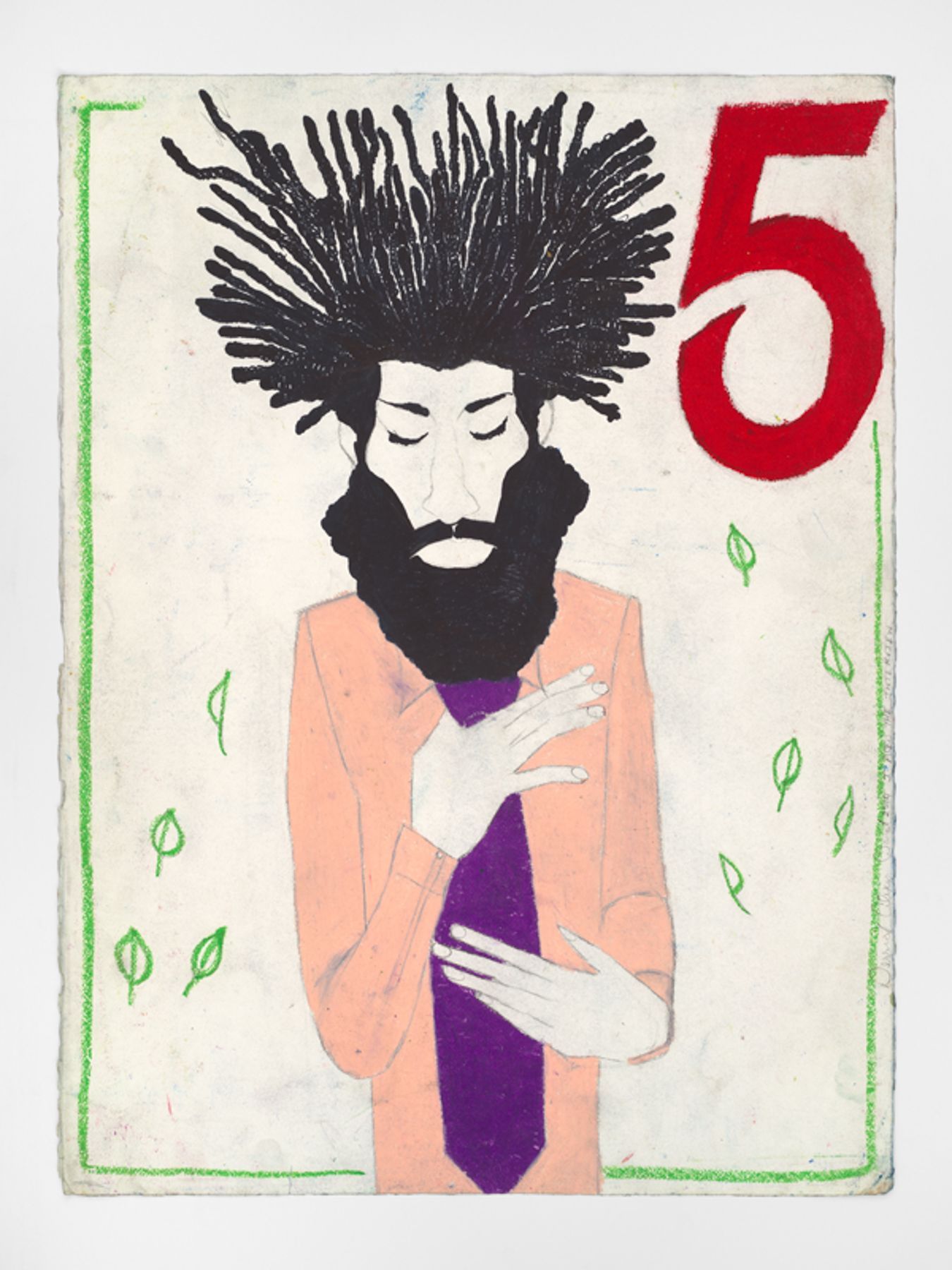I Am that I Am
Even when the depicted figures eyes are not directly confronting the viewer, if they gaze beyond the page, appear closed or drifting, or obscured by sunglasses, the same calm but stoic spirit is present.
Installation Views
Artwork
Derrick Alexis Coard: I Am That I Am
Texts and contributions from Matthew Higgs, Dustin Yellin, Jonathan Lyndon Chase, and Moritz Scheper
I first met Derrick Alexis Coard (1981–2017) in 2013 in the Long Island City studio of Healing Arts Initiative (HAI), a storied New York nonprofit organization founded in 1969 that sought to inspire “healing, growth and learning through access to the arts for the culturally underserved.” Derrick had started working in HAI’s art studio program in 2008 and would continue to be an active member of the HAI community until 2016, when the organization abruptly closed. When I met Derrick he was working simultaneously on a number of portraits of what he described as “bearded black men.” He had a small stack of the drawings with him, each in a different stage of resolution: some were almost fully realized, whereas others were still outlines or sketches, awaiting further work. Talking with Derrick I discovered that he had started to draw seriously as a child, and that as a teenager he had attended Saturday art classes at New York’s Fashion Institute of Technology, summer school at the Brooklyn Museum, and night classes at the Jamaica Art Center. During his adolescence in the 1990s Coard began to create his now-iconic images of bearded black men. These works are not self-portraits, nor are they portraits of specific individuals; rather, they are composites of different people that Derrick observed or encountered in his community and travels throughout New York City. In his resulting drawings, these figures almost become characters, and the city their stage. In a statement Derrick wrote to accompany his 2014 debut solo exhibition at White Columns, he described his work as “a form of testimonial where black men can be seen in a more positive and righteous light.” Derrick’s exhibition at White Columns took the form of a focused survey of his work made between 2000 and 2014 (the earliest works in the exhibition having been made while he was still in his teens). Coard’s complex works both explore and amplify equally complex questions of identity, masculinity, desire, and faith. (The critic Michael Wilson observed in his Artforum review of the White Columns exhibition that “Coard’s use of the word righteous reveals his spiritual leanings.”) These unresolved, and perhaps unresolvable, tensions are at the heart of Coard’s profound—and profoundly personal—project. Derrick died unexpectedly in 2017 at the age of thirty-six, leaving behind an extraordinary body of work that continues to resonate widely. He is greatly missed by his family, friends, and community.
—Matthew Higgs
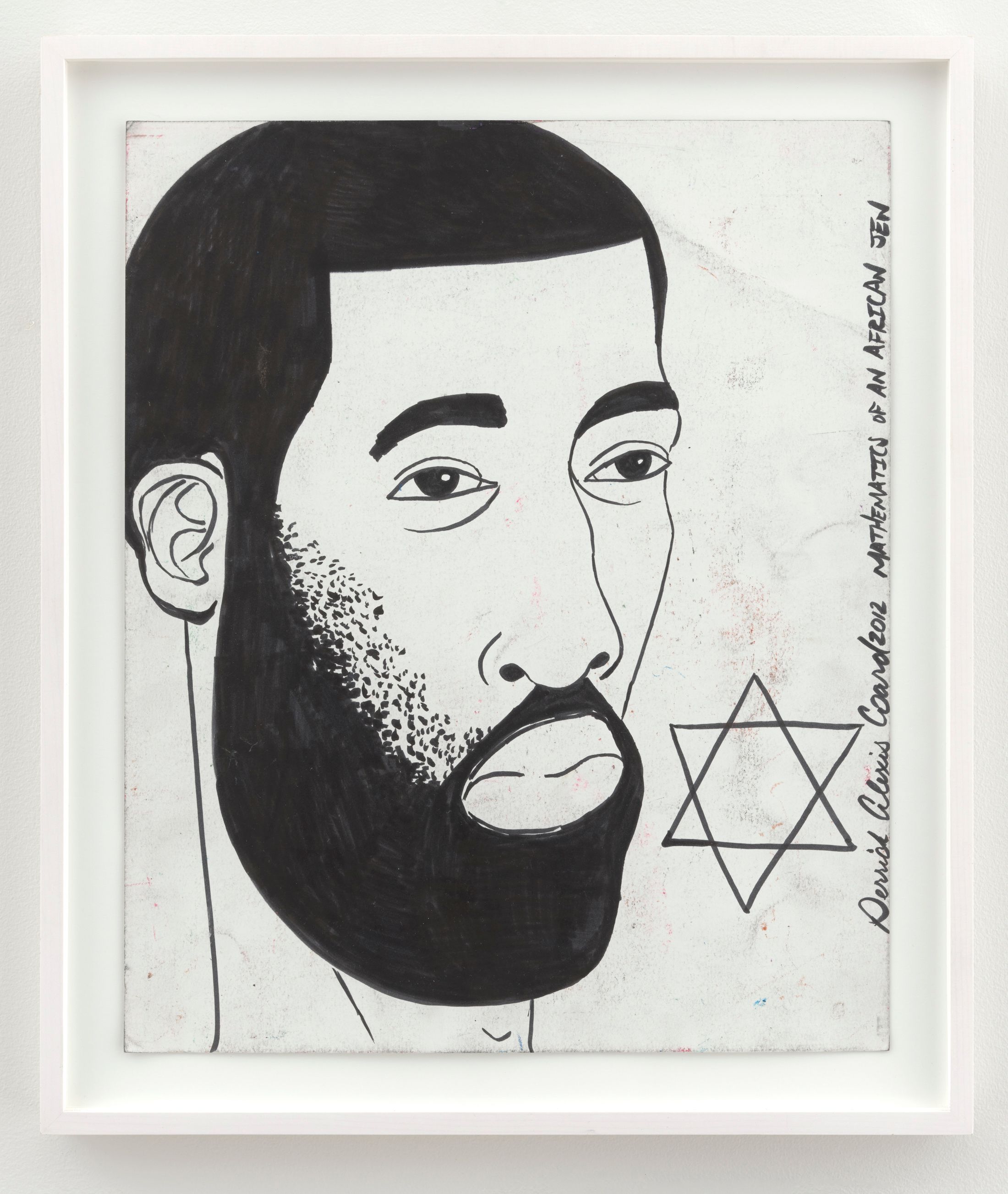
Derrick Alexis Coard, Mathematics of an African Jew, 2012
The moment I saw this drawing, I fell in love with it. Its hollow gaze a silent summons with a beautiful, contemplative sadness—a signature of Derrick Alexis Coard’s voice as an artist.
In Coard’s universe, figures possess a caricature-like cynicism captured within the stoic silences of their portraits. Each work offers individual examinations of and resonant meditations on identity, history, and race, and the often complicated confluence of the three. They possess an integrity and honesty found outside of the art school industrial complex, offering a narrative stitched from the raw truths of life and experience that cannot be taught.
The simplicity of Coard’s compositions belies the weight of the subject matter at hand. Coard’s portraits are often quite straightforward: a man with a beard evades the viewer’s gaze. Through Coard's eyes, the beard becomes more than facial hair; it is a potent symbol, rich in the iconography of manhood, signaling both maturity and vulnerability—a shield warding off the world’s narrow expectations.
—Dustin Yellin
I remember stumbling upon Derrick Alexis Coard’s work during my early days as an artist, searching for voices that shared similar concerns and possessed a distinct visual style that resonated with me. It was during a late night of scrolling that I found such a connection with Derrick’s work. The emotions that surged through me were a mix of permission and inspiration as I delved into his beautiful, honest, and cathartic portraits.
Derrick’s art evokes thoughts of the important men in my life—their beauty, tenderness, and resilience, alongside their complexities and the vastness of their dreams. His body of work encourages us to contemplate the nuances of portraiture more deeply and intimately, urging us to consider what lies beyond the surface. I see Derrick as a divine and anointed artist, his neurodivergent perspective enriching us all. As someone living with bipolar disorder, encountering Derrick’s work has been nothing short of a blessing.
—Jonathan Lyndon Chase
A great deal has already been written about why Derrick Alexis Coard’s art is so moving. About its poetry as well as its deep sensuality, and hence its humanity. If there is now a cornucopia of remarks on Coard in connection with this exhibition, I would like to take the opportunity to relate his tender drawings more strongly to the hard-hitting context in which they may have been created. For as personal as this artistic cosmos may be, it works against the Mandingo trope, which has been rampant since the time of slavery and is still prevalent in the media, particularly in porn. Needless to say, such films replace actual histories with phantasmic images of inherent black male sexual aggression towards white women. The very real consequences of such media distortions are felt by black men every day anew.
In his drawings, Coard counters this disgusting yet extremely powerful trope with a tender, spiritual sexuality in which the bodies of black men are freed from incriminating and otherizing attributions—in part because they are related to nothing other than themselves. The occasional halo or angel’s wings wouldn’t even be necessary; the soft eyes and beard are enough to undermine any contaminated iconography. Nevertheless, it seems to me that the Mandingo effect forms the grim background against which the porosity of black masculinity, as outlined by Coard, rises up. All the touching poetry of these drawings, their sensuality and humanity, derives at least in part from his radical inversion of this aggressive racist trope. This reading may be obvious, but it is important to mention, as artists with mental health disorders are often accessed through an “otherworldliness” or personal mythology, which can bypass key aspects of an artist’s work. The poignancy of Coard’s works is heightened if we all see the compassion, tenderness and pureness in them not as retreat, but as the pursuit of a better reality.
—Mortiz Scheper
Derrick Alexis Coard: I Am That I Am is organized in collaboration with Marc Jancou Contemporary and KARMA. Special thanks to Matthew Higgs and the White Columns team for their incredible support, and to all the lenders who made this exhibition possible.
In collaboration with Salon 94, Karma presents I Am that I Am, an exhibition of works on paper by Derrick Alexis Coard open from June 26 to August 23, 2024, at 172 East 2nd Street.
For additional information on this exhibition, please contact Caroline Currier (caroline@salon94.com)
Press
Wallpaper
